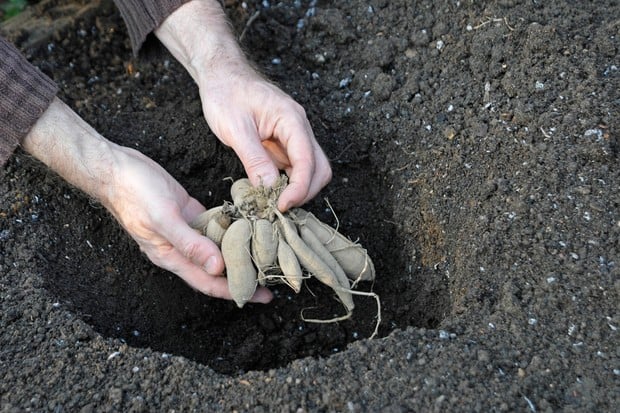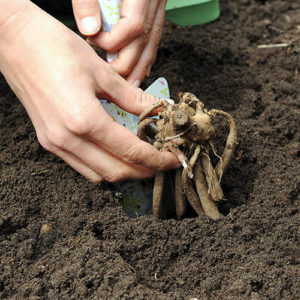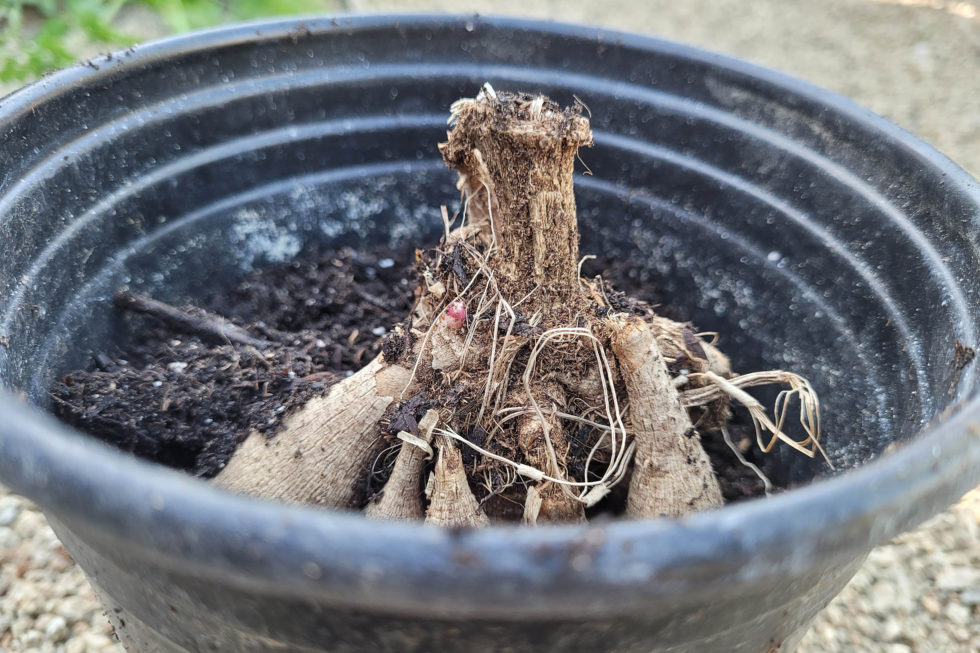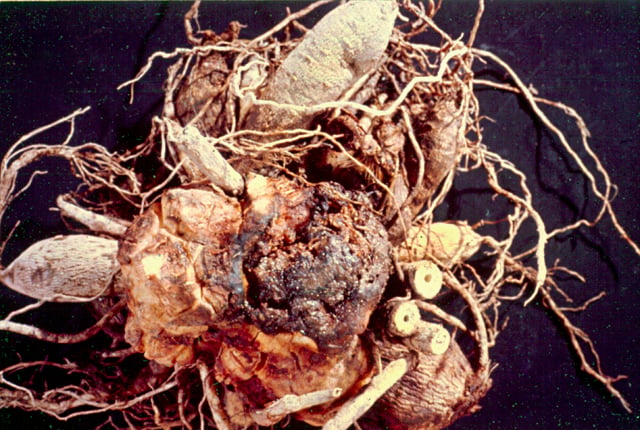Preparing for Success: Choosing the Right Dahlia Tubers
When learning how to start dahlia tubers, selecting high-quality tubers is crucial for a successful growing experience. With so many varieties available, it can be overwhelming to choose the right ones. However, by considering a few key factors, you can set yourself up for success and enjoy a bountiful harvest of beautiful dahlias.
Disease resistance is a critical factor to consider when choosing dahlia tubers. Look for tubers that have been certified as disease-free or have been grown using sustainable practices. This will minimize the risk of infection and ensure healthy growth. Additionally, consider the size of the tubers, as larger tubers tend to produce more robust plants.
Another important consideration is the variety of dahlia. With over 50,000 registered varieties, dahlias come in a wide range of colors, shapes, and sizes. From compact, pom-pom-like blooms to tall, statuesque varieties, there’s a dahlia to suit every taste and garden style. When selecting a variety, think about the desired bloom color, size, and shape, as well as the growing conditions in your garden. By taking the time to choose the right dahlia tubers, you’ll be well on your way to growing stunning, vibrant dahlias that will add beauty and charm to your garden.
Soil and Sun: Creating the Ideal Environment
When learning how to start dahlia tubers, it’s essential to create an ideal environment that fosters healthy growth and blooming. Two critical factors to consider are soil conditions and sunlight requirements. By providing your dahlias with the right soil and sunlight, you’ll be well on your way to growing stunning, vibrant flowers.
Soil Conditions: Dahlias prefer well-draining, fertile soil that is rich in organic matter. To prepare the soil, mix in a 2-inch layer of compost or well-rotted manure. This will help to improve the soil’s structure and fertility, providing your dahlias with the nutrients they need to thrive. Additionally, make sure the soil is slightly acidic to neutral, with a pH between 6.0 and 7.0.
Sunlight Requirements: Dahlias require full sun to partial shade, depending on the variety. In general, most dahlias need at least 6 hours of direct sunlight per day. However, some varieties can tolerate partial shade, especially in warmer climates. When selecting a location, choose a spot that receives the right amount of sunlight for your specific dahlia variety.
Tips for Preparing the Soil and Selecting the Right Location: Before planting, remove any debris or weeds from the soil. Then, till the soil to a depth of 12 inches to loosen and aerate it. When selecting a location, consider the mature size of your dahlias and leave enough space for air circulation and growth. By following these tips, you’ll be able to create an ideal environment for your dahlias to thrive.
How to Plant Dahlia Tubers: A Step-by-Step Guide
Once you’ve chosen the right dahlia tubers and prepared the ideal environment, it’s time to plant them. Planting dahlia tubers requires some care and attention to detail, but with these step-by-step instructions, you’ll be able to get your dahlias off to a strong start.
Step 1: Planting Depth – Plant dahlia tubers 4-6 inches deep, depending on the size of the tuber. Make sure the “eyes” or growing points are facing upwards and are at least 2 inches below the soil surface.
Step 2: Spacing – Space dahlia tubers 12-18 inches apart, depending on the mature size of the variety. This will give the plants enough room to grow and receive adequate air circulation.
Step 3: Watering – Water the soil gently but thoroughly after planting. Make sure the soil is moist but not waterlogged, as this can cause the tubers to rot.
Step 4: Mulching – Mulch around the base of the plants to retain moisture, suppress weeds, and regulate soil temperature. Use a thin layer of organic mulch like straw or bark chips.
Tips for Planting Dahlia Tubers: When planting, make sure the soil is at a temperature of at least 60°F (15°C). This will help to stimulate growth and promote healthy development. Additionally, consider planting dahlia tubers in the morning or late afternoon to avoid direct sunlight, which can cause the soil to dry out. By following these steps and tips, you’ll be able to successfully plant your dahlia tubers and set yourself up for a bountiful harvest of beautiful flowers. When learning how to start dahlia tubers, it’s essential to get the planting process right, and with these instructions, you’ll be well on your way to growing stunning dahlias.
Caring for Your Dahlias: Watering, Fertilizing, and Pruning
After planting dahlia tubers, it’s essential to provide the right care to promote healthy growth and blooming. By following these tips on watering, fertilizing, and pruning, you’ll be able to enjoy a bountiful harvest of beautiful flowers.
Watering Schedules: Dahlias need consistent moisture, especially during the first few weeks after planting. Water them deeply once or twice a week, depending on weather conditions. Avoid overwatering, which can lead to root rot and other problems.
Fertilization Tips: Feed your dahlias with a balanced fertilizer once a month. You can also use a high-potassium fertilizer to promote blooming. Apply the fertilizer according to the manufacturer’s instructions to avoid burning the roots.
Pruning Techniques: Prune your dahlias regularly to promote bushy growth and encourage blooming. Remove any weak or spindly stems, and cut back the plant to about 6 inches from the ground after the first frost. This will help the plant conserve energy and prepare for the next growing season.
Tips for Caring for Dahlias: When learning how to start dahlia tubers, it’s essential to understand the importance of regular care. Check the soil moisture daily, and adjust your watering schedule accordingly. Also, consider staking tall varieties to prevent them from toppling over in the wind. By following these care tips, you’ll be able to enjoy a vibrant display of dahlia flowers all season long.
Additional Care Tips: Deadhead your dahlias regularly to encourage more blooming. Remove any spent flowers, and trim back the stems to the nearest leaf node. This will help the plant direct its energy towards producing more flowers. Additionally, consider dividing and replanting your dahlias every 2-3 years to maintain their vigor and promote healthy growth.
Common Mistakes to Avoid When Starting Dahlia Tubers
When learning how to start dahlia tubers, it’s essential to avoid common mistakes that can hinder the growth and development of your plants. By being aware of these mistakes, you can take steps to prevent them and ensure a successful harvest of beautiful flowers.
Overwatering: One of the most common mistakes when starting dahlia tubers is overwatering. Dahlias need consistent moisture, but too much water can lead to root rot and other problems. Check the soil moisture daily, and adjust your watering schedule accordingly.
Underwatering: On the other hand, underwatering can also be detrimental to dahlia growth. Make sure to provide your plants with enough water, especially during the first few weeks after planting.
Inadequate Sunlight: Dahlias need full sun to partial shade to thrive. Make sure to plant them in a location that receives at least 6 hours of direct sunlight per day.
Insufficient Soil Preparation: Dahlias need well-draining soil that is rich in organic matter. Make sure to prepare the soil before planting by adding compost or well-rotted manure.
Not Providing Support: Tall dahlia varieties need staking to prevent them from toppling over in the wind. Provide support using stakes or a trellis to keep your plants upright and secure.
By avoiding these common mistakes, you can ensure a successful harvest of beautiful dahlia flowers. Remember to provide your plants with the right care, including consistent moisture, adequate sunlight, and proper soil preparation. With these tips, you’ll be well on your way to growing stunning dahlias that will add color and beauty to your garden. When learning how to start dahlia tubers, it’s essential to be aware of these mistakes and take steps to prevent them. By doing so, you’ll be able to enjoy a bountiful harvest of beautiful flowers.
Troubleshooting: Dealing with Pests, Diseases, and Other Issues
When learning how to start dahlia tubers, it’s essential to be aware of common problems that may arise during the growing season. By knowing how to troubleshoot these issues, you can take steps to prevent them and ensure a healthy and thriving crop of dahlias.
Pest Control: Aphids, slugs, and snails are common pests that can damage dahlia plants. Use organic pest control methods such as neem oil or insecticidal soap to control infestations.
Disease Management: Dahlias are susceptible to diseases such as powdery mildew and root rot. Prevent these diseases by providing good air circulation, watering carefully, and removing infected plants.
Fungal Diseases: Fungal diseases such as botrytis and leaf spot can be prevented by removing dead flowers and debris, and improving air circulation around the plants.
Other Issues: Other common issues that may arise when growing dahlias include nutrient deficiencies, transplant shock, and weather damage. Be prepared to address these issues by providing adequate nutrients, hardening off transplants, and protecting plants from extreme weather conditions.
By being aware of these common problems and taking steps to prevent them, you can ensure a healthy and thriving crop of dahlias. Remember to monitor your plants regularly, and take action quickly if you notice any signs of trouble. With these troubleshooting tips, you’ll be well on your way to growing beautiful dahlias that will add color and beauty to your garden. When learning how to start dahlia tubers, it’s essential to be prepared for any issues that may arise, and take steps to prevent them. By doing so, you’ll be able to enjoy a bountiful harvest of beautiful flowers.
Timing is Everything: When to Plant and Harvest Dahlias
When learning how to start dahlia tubers, timing is crucial for a successful harvest. Planting and harvesting dahlias at the right time can make all the difference in the quality and quantity of blooms.
Best Time to Plant: In most regions, the best time to plant dahlia tubers is in the spring, when the soil has warmed up to at least 60°F (15°C). This allows the tubers to establish themselves before the heat of summer.
When to Bloom: Dahlias typically take around 90 to 120 days to bloom after planting. With proper care, dahlias can continue to bloom throughout the summer and into the fall.
When to Harvest: Dahlias are ready to harvest when the flowers are in full bloom. Cut the stems just above a leaf node, and use the flowers in arrangements or enjoy them in the garden.
Regional Variations: Planting and harvesting times may vary depending on your region and climate. In areas with a shorter growing season, dahlias may need to be started indoors 4-6 weeks before the last frost date.
By understanding the importance of timing when planting and harvesting dahlias, you can ensure a successful and bountiful harvest of beautiful flowers. Remember to plant at the right time, care for your dahlias properly, and harvest them when they’re in full bloom. With these tips, you’ll be well on your way to growing stunning dahlias that will add color and beauty to your garden. When learning how to start dahlia tubers, it’s essential to consider the timing of planting and harvesting to get the best results. By doing so, you’ll be able to enjoy a beautiful display of flowers all season long.
Getting the Most Out of Your Dahlias: Tips and Variations
Once you’ve mastered the basics of how to start dahlia tubers, it’s time to take your dahlia game to the next level. With a few simple tips and variations, you can get the most out of your dahlia plants and enjoy a stunning display of blooms all season long.
Staking: Many dahlia varieties can grow quite tall, so staking is essential to keep them upright and prevent damage from wind or rain. Use bamboo stakes or tomato cages to provide support for your dahlias.
Deadheading: Deadheading, or removing spent blooms, is a great way to encourage dahlias to produce more flowers. Simply snip off the faded blooms, and your dahlias will respond by producing even more vibrant flowers.
Using Dahlias in Arrangements: Dahlias make a beautiful addition to any floral arrangement. Simply cut the stems at an angle, and arrange them with other flowers and foliage for a stunning display.
Experimenting with Varieties: With over 50,000 dahlia varieties to choose from, there’s no shortage of options for experimenting with different colors, shapes, and sizes. Try growing a few different varieties to see which ones you like best.
Companion Planting: Dahlias can benefit from companion planting, where they’re paired with other plants that provide benefits like pest control or nutrient uptake. Try planting dahlias with marigolds, basil, or nasturtiums for a beautiful and beneficial display.
By incorporating these tips and variations into your dahlia-growing routine, you’ll be able to get the most out of your plants and enjoy a beautiful display of blooms all season long. Remember, the key to success is to experiment, have fun, and learn as you go. With these tips, you’ll be well on your way to becoming a dahlia expert and enjoying the beauty of these stunning flowers. When learning how to start dahlia tubers, it’s essential to consider the many ways you can get the most out of your plants. By doing so, you’ll be able to enjoy a beautiful and bountiful harvest of dahlias.







